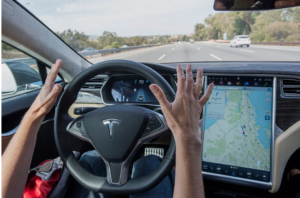
Introduction
The automobile industry is undergoing a remarkable transformation, driven largely by advancements in artificial intelligence (AI). As we stand on the brink of a technological revolution, AI is not just a buzzword; it’s a pivotal force shaping modern vehicles and the driving experience. With the integration of AI, cars are not only becoming smarter but are also evolving into a more personalized and efficient mode of transportation. This blog will delve into specific examples illustrating how AI is revolutionizing the automobile world, redefining the way we drive, maintain, and interact with our vehicles.
Section 1: Understanding Artificial Intelligence in Automobiles
In the context of automobiles, artificial intelligence refers to the simulation of human intelligence in machines that are programmed to think and learn. These technologies enable vehicles to perform tasks that typically require human intelligence, such as recognizing objects, making decisions, and learning from experiences.
Various AI technologies are employed within vehicles:
-
- Machine Learning: This allows cars to learn from data and improve their performance over time. For instance, a vehicle can learn optimal driving patterns based on historical data.
-
- Computer Vision: This technology enables cars to interpret visual information from the world around them. For example, it helps in recognizing traffic signs, pedestrians, and other vehicles on the road.
-
- Natural Language Processing (NLP): NLP enables vehicles to understand and respond to voice commands, making interactions with the car more intuitive and user-friendly.
Section 2: Key Areas Where AI is Making an Impact
2.1 Autonomous Driving
One of the most significant impacts of AI in the automobile industry is the development of autonomous driving technology. AI algorithms process vast amounts of data from vehicle sensors, cameras, and GPS to navigate roads without human intervention. Companies like Tesla and Waymo are leading the charge in this space, aiming for fully self-driving cars that can operate safely and efficiently in varied driving conditions.
Tesla’s Autopilot feature, for instance, utilizes advanced neural networks to analyse real-time data and make driving decisions, such as steering, acceleration, and braking. Waymo, on the other hand, employs a fleet of self-driving minivans that have racked up millions of miles in testing, showcasing the potential of AI for transforming transportation.
2.2 Enhanced Safety Features
AI is also at the forefront of enhancing vehicle safety through advanced driver-assistance systems (ADAS). These systems utilize AI to provide features such as:
-
- Automatic Emergency Braking: This feature can detect an impending collision and apply the brakes automatically, helping to prevent accidents.
-
- Lane Departure Warnings: AI monitors lane markings and alerts the driver if they begin to drift out of their lane.
-
- Adaptive Cruise Control: This system uses AI to adjust the vehicle’s speed in relation to surrounding traffic, maintaining a safe distance from other vehicles.
These safety enhancements significantly reduce the risks of accidents and improve overall road safety.
2.3 Predictive Maintenance
Predictive maintenance is another area where AI is making a profound impact. By analysing data from various vehicle sensors, AI can predict maintenance needs before they escalate into critical issues. This allows drivers to perform timely repairs, ultimately extending the lifespan of the vehicle and improving reliability.
Companies like Ford are using AI-driven diagnostics to monitor vehicle health and send alerts to drivers when maintenance is needed. By leveraging historical data and machine learning algorithms, these systems can provide insights into potential failures, ensuring that drivers are informed and prepared.

2.4 Personalized Driving Experience
AI algorithms are also enhancing the driving experience by personalizing it based on individual user preferences. Smart infotainment systems can learn from a driver’s habits, such as preferred routes or music choices, and suggest options accordingly. For instance, if a driver frequently takes a certain route to work, the system can automatically suggest that route along with real-time traffic updates.
Additionally, AI can customize cabin settings, such as seat adjustments and climate control, based on the driver’s preferences, creating a more comfortable and enjoyable driving experience.
Section 3: Real-world Applications of AI in Automobiles
3.1 Case Study: Tesla’s Autopilot
Tesla’s Autopilot is a groundbreaking application of AI in the automotive sector. Utilizing a sophisticated array of sensors, cameras, and radar, Autopilot is designed to assist with driving tasks while ensuring safety and reliability. The AI algorithms enable the vehicle to recognize its environment, make decisions in real time, and learn from previous experiences.
One of the most notable aspects of Tesla’s approach is its over-the-air software updates. This allows Tesla to continually improve its Autopilot feature, incorporating data from all its vehicles to enhance algorithms and safety protocols. For instance, Tesla has reported that its vehicles can learn from millions of miles driven by its user base, resulting in better navigation, obstacle detection, and overall performance. This continuous learning capability positions Tesla as a leader in the race toward fully autonomous vehicles.
3.2 Case Study: General Motors’ Super Cruise
Another significant advancement in AI-driven automobile technology is General Motors’ Super Cruise. This hands-free driving technology allows drivers to take their hands off the wheel on certain highways, thanks to a combination of AI, LIDAR mapping, and real-time monitoring.
Super Cruise uses a driver attention system that ensures the driver remains engaged with the driving process. If the system detects that the driver is not paying attention, it will issue alerts and, if necessary, bring the vehicle to a stop. This feature not only enhances safety but also provides a glimpse into the future of automated driving, where drivers can enjoy a more relaxed driving experience while still being attentive to the road.
Section 4: Challenges and Considerations
Despite the vast potential benefits of AI in the automobile industry, there are significant challenges and ethical considerations that must be addressed. One of the primary concerns revolves around decision-making in emergency situations for autonomous vehicles. The classic ethical dilemma of whether to prioritize the safety of the driver or pedestrians raises questions about how AI systems should be programmed.
Furthermore, regulatory hurdles present significant challenges to the widespread adoption of autonomous vehicles. Legislation and regulations must evolve to accommodate these technologies, ensuring that they are safe and effective while also protecting public interests. Issues such as liability in the event of accidents, data privacy, and cybersecurity need to be carefully considered as technology continues to advance.
Conclusion
Artificial intelligence is undeniably transforming the automobile industry, ushering in an era of smart, safe, and personalized vehicles. From autonomous driving and enhanced safety features to predictive maintenance and personalized driving experiences, the applications of AI are reshaping how we think about transportation. As we move forward, it is essential to consider both the potential benefits and the challenges that accompany this technological revolution. A balanced approach that embraces innovation while addressing ethical and regulatory concerns will be crucial to harnessing the full potential of AI in automobiles.
We invite you to share your thoughts on AI’s impact on cars or your experiences with smart vehicle technologies. How do you envision the future of driving with AI? Join the conversation!
